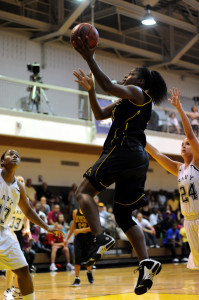Changing Direction in the Close-out: Advanced Skills in Defence
The Close-out is one of the most demanding skill performed by a player in the sport of basketball. The close-out fills the gap between what the defence can give and what the situation demands. The close-out when taught is a pretty straight forward technique. There are not that many variations amongst coaches in regards to how this skill is taught. So why is it then that the close-out is often the point at which a team’s controlled and well-rehearsed defence so often falls apart and the offense starts to take control and dictate terms?

The answer is that adding a change of direction to the technique of a close-out almost always results in a poor outcome for the defence. A change of direction in a close-out transforms a would be fundamental technique, introduced and rehearsed at the junior levels of the sport a thousand times, into an advanced skill.
So let us explore why the change of direction often destroys the perfect technique of the close-out. To help with the explanation we will start at the beginning of the close-out and work through the full timeline of the techniques performance.
The first problem often encountered is that many players are not starting in a low athletic stance when playing help defence. As a result, players have to make-up for the time lost from the poor stance. So they over compensate in the length of their sprint during the close-out. They end up over running or reaching too high of a maximum speed to then be flexible enough to deal with an offensive players change of direction.
Another very common problem is often the misinterpretation of emphasis on speed rather than acceleration within the close-out. Players are often coached to reduce the distance between themselves and offensive player as quickly as possible. This is indeed the right objective of the technique, but the problem is players often focus on their top end speed or the last few steps of the close-out rather than the first few steps. The difference is in the reaction time and explosive acceleration vs. speed. The quicker the reaction time the less need there is for a higher maximum speed as the defensive players is reaching the point of changing from a run to a defensive stance. This just so happens to also be the time when the offensive player is looking to exploit the uncontrollable speed of the defensive player. With a lower top speed reached and less momentum the defensive player is more capable of changing direction successfully.
The next problematic area of focus is the use of the stutter step. Often players fail in the last two metres between themselves and their opponent because they are not starting to widen their stance and finish on the balls of their feet. Most players do stutter step, but their finishing defensive stance often is only slightly wider then where their feet were while running at the time of the offensive player’s change of direction. This is counterproductive to restoring good balance and body positioning to then facilitate a change of direction during the close-out. The finishing defensive stance should probably (depending on the physique of the individual) be around twice that of running width.
The use of the arms as counter weights is another common issue seen in the technique of changing direction during a close-out. Once it is seen that the offensive player has forgone the option of shooting, the defensive player must extend their arms to widen the obstacle for the offensive player to move around and as the arms are extending use their arms as counter-weights to help push them towards the path of the offensive player so they gain assistance in beating them to a spot.
The final problem faced by teaching change of direction in the close-out is that it is often not practiced enough explicitly. Too often in training sessions, the fundamental technique of the close-out is practiced, but not the advanced skill which is often the unrelenting problem. A greater amount of opportunities need to be provided for players to practice this skill in a specific situational breakdown and with numerous repetitions.
Closing-out in certain situations, against scouted players will demand a long close-out to deter a prolific shooter. Nevertheless, this will be determined by directions given by the coach. Otherwise, players should be aware, along with coaches, of this common problem that is often overlooked and drilled incorrectly.
Related articles






